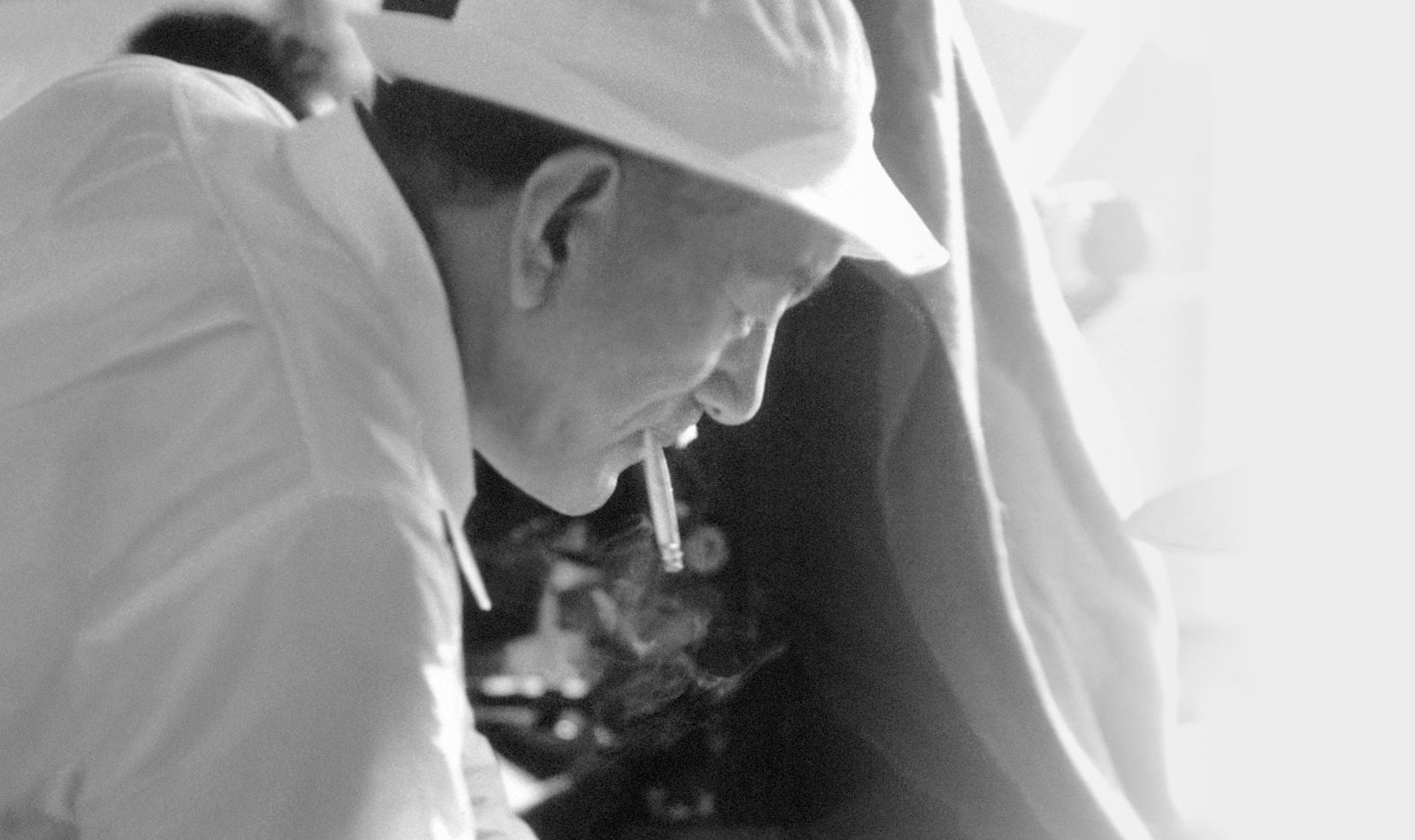
1903年12月12日、東京深川(江東区)に生まれる。小学生の時に父の故郷・三重県松阪市に移る。この時期に見たハリウッド映画「シヴィリゼーション」(監督:トーマス・H・インス)の影響で、映画の道を志す。三重県伊勢市の宇治山田中学校卒業後、飯高町の尋常小学校で1年間代用教員を務めた後、帰京。
1923年撮影助手として松竹キネマ蒲田撮影所に入社。1926年演出部に移り、翌1927年時代劇「懺悔の刃」で監督デビューを果たす。1932年に監督した「生まれてはみたけれど」はキネマ旬報ベストテンで第1位に選出されるなど、高い評価を得た。1936年自身初のトーキー作品「一人息子」は最後の蒲田撮影所作品ともなった。
1943年に軍報道部映画班として南方へ従軍、この地で数多くのハリウッド映画を見る。終戦をシンガポールで迎え捕虜生活の後、翌年帰国。1947年戦後第1作「長屋紳士録」で復帰。戦後は脚本家・野田高梧と組み、神奈川県茅ヶ崎市の旅館・茅ヶ崎館で脚本を執筆し、「晩春」、「麦秋」、「東京物語」といった名作を次々に発表。中流家庭を舞台に親子の関係や人生の機微を描き、独自のローアングルの手法を磨き上げ、いわゆる“小津調”を確立し日本映画界を代表する巨匠となる。「東京暮色」以降は蓼科高原(長野県茅野市)にて脚本を執筆し、晩年の名作を生み出す。
1958年「東京物語」がロンドン国際映画祭でサザーランド賞を受賞したのを機に、海外でも注目を浴びるようになる。同年には紫綬褒章、翌1959年には芸術院賞を受賞し、映画人として初の芸術院会員となる。世界レベルで評価が高まる中、癌に冒され、1963年12月12日、60歳の誕生日に逝去。晩年を過ごした北鎌倉の円覚寺の墓に眠る。
死後もその評価は高まる一方で、大船撮影所の監督は勿論、周防正行、市川準、竹中直人ら日本の監督たちにとどまらず、トリビュート・フィルム「東京画」を撮ったヴィム・ヴェンダース、ジム・ジャームッシュ、アキ・カウリスマキ、ホウ・シャオシェンをはじめとし世界の監督たちにも大きな影響を与え続けている。2012年、英国映画協会発行の「サイト・アンド・サウンド」誌が発表した世界の映画監督358人が投票で決める最も優れた映画で、「東京物語」が1位に、批評家846人の投票では3位に選ばれた。
Yasujiro Ozu, one of Japan's finest film directors, was born on December 12th 1903 in Tokyo's Fukagawa. While a grade school student, he moved to the provincial city of Mie where his father was from, and it was here that he said he first
discovered motion pictures, having seen and been much impressed by Thomas Ince's “Civilization”. After graduating from Ujiyamada Middle School in Ise near Mie, he worked as a substitute teacher at Iidaka Grade School for a year before
returning to Tokyo.
In 1923, he signed on with Shochiku Kamata Studios as an assistant photographer. Three years later he transferred to the directorial department, and in 1927 he made his debut with a period drama (his only
one), “The Sword of Penitence” (Zange no Yaiba).
Ozu's later films won much praise, particularly “I Was Born, But...” (Umarete wa Mita Keredo) which was chosen by prestigious publication Kinema Jumpo as the best film of 1932.
His first talkie “The Only Son” (Hitori Musuko, 1936) turned out to be his last film at Kamata Studios.
Ozu was later sent back to the war as member of a military news film team, during which time he mostly watched Hollywood pictures, and was in Singapore when WWII ended. He was captured as a prisoner of war, and subsequently returned
to filmmaking in 1947 with “Record of a Tenement Gentleman” (Nagaya Shinshiroku), his first postwar production.
After the war, Ozu again teamed up with his scenarist Kogo Noda, and together they created such masterpieces as “Late Spring” (Banshun, 1949), “Early Summer” (Bakushu, 1951), and “Tokyo Story” (Tokyo Monogatari, 1953). In these
and their later films, Ozu and Noda superbly depicted the Japanese family, relations between parents, and between children and their mothers and fathers.
Through the subtleties of the "Ozu style" with its continual low camera angles, its refusal to comment on the story it was conveying, its simplicity, and its depth, these films remain among the finest in Japanese cinema. Ozu
and Noda crafted their creations at a slow pace, making about one film a year. Often they worked on their scripts at the Chigasaki-kan, an inn in Chigasaki near Kamakura, and later at Noda's villa or Ozu's own villa in Nagano.
In 1958, “Tokyo Story” won a major prize at the London Film Festival. A major retrospective was screened at the Berlin Film Festival in 1961, bringing considerable international attention to Ozu and his work. He received a medal
from the Japanese government in 1958, and in the same year won the Art Academy Award. In 1959, he became the first figure from the Japanese film world to join the Japan Art Academy.
At the height of his reputation, Ozu died of cancer on December 12th 1963, his 60th birthday. He was buried in the cemetery at Engakuji, a temple in Kita-Kamakura where he had spent his last years.
Ozu came to be held in even higher esteem after his death, not only among Japanese filmmakers but also foreign directors including Jim Jarmusch, Wim Wenders, Aki Kaurismaki, and Hou Hsiao-Hsien. In 2012, at the poll of The Greatest
Films of All Time compiled by the British Film Institute's Sight & Sound magazine, the world chose “Tokyo Story” as the No.1 film of all the time voted on by 358 directors from around the world and No. 3 in Critics' choice voted by
846 critics.

